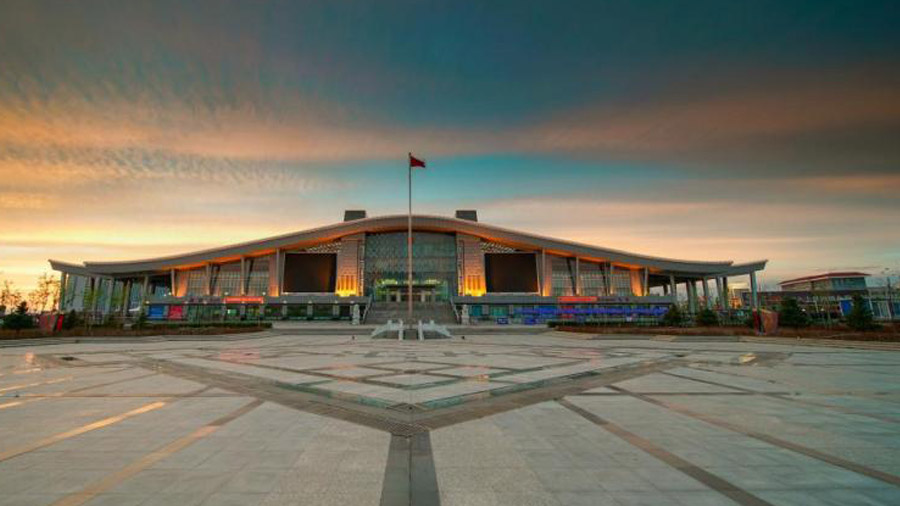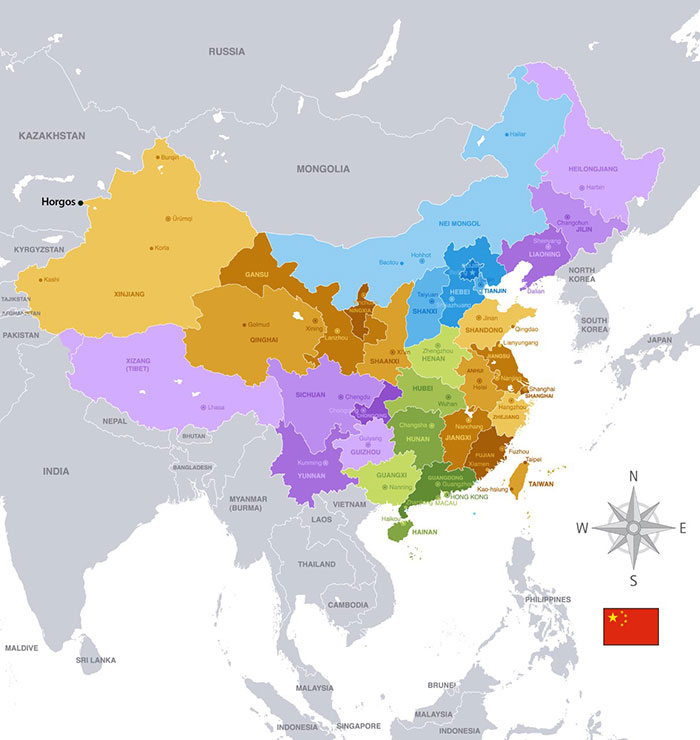Horgos Port Develops As Xinjiang Becomes An Important Hub For Chinese & Central Asia Rail Freight To Europe

China’s Western Xinjiang Province, the subject of much political debate in the EU concerning China’s treatment of the Uyghurs, has increased the volume of containers it sends to Europe.
Fourteen new freight train routes through Horgos, in northwest Xinjiang to other cities in China, Europe and Central Asia have opened since January this year, making Horgos the largest land port in western China and an increasingly important trade hub linking Central Asia both east and west.
According to Horgos Customs, over 3,600 freight trains passed through the city during the first seven months of 2021, a year-on-year increase of 44%.
Cargo volume went up by 56%, reaching over 5 million tonnes. Both figures are the highest for Xinjiang’s rail terminals.
Horgos Customs has said that over 200 types of products were being transported via 35 inbound and outbound railway routes through Horgos. Together they cover 45 cities in 18 countries, including Georgia, Germany, and Poland.

There has been investment to meet the demand – renovation and expansion during 2020 has increased Horgos port capacity by 30%. Government administration has also been streamlined and better coordinated between customs, railways, and frontier inspection, in addition to carriage changing, marshaling, inspection and customs release.
Carriage changing especially has previously been a time-consuming process. Rail tracks in China run on a different gauge to the tracks in neighboring Kazakhstan. However new equipment and speedier processing has reduced the clearance time for trains to one hour as opposed to the previous three and a half. The Port also now maintains 24-hour operations, further guaranteeing the handling capacity of Horgos and improving customs clearance.
The new routes have also been attracting new businesses dealing in foreign trade. Xinjiang is a major producer of agricultural products, and the nearby ECommerce Zone at Aksu has seen online retail sales of rural products in Xinjiang rising 29% last year with consumers firmly based in Kazakhstan and beyond. Those sales need delivering.
The make-up of Xinjiang’s exports has also been developing. From a previous base of lower end garments, shoes, daily necessities and building materials, the region has become more industrialized and now exports mechanical and electrical products, high-tech products, vehicles, and other high value-added products. The demand for bulk resource commodities has also increased. This is due in part to the “Western Development Project” (the Go West campaign) which entered the National People’s Congress plans in 2004 and is a precursor to the entire Belt & Road Initiative. This project is still in effect and regularly updated (for example the latest additions provided for the development of ECommerce Economic Zones). Broadly however the 2004 Western Development plans called for “the development of infrastructure (transport, communications, hydropower, energy), ecological protection (reforestation), and improved education. (We preempted that development by two years, a 2002 archived issue of a now 20-year-old China Briefing Magazine ‘Opening Up The West’ can be seen here and a 2003 title, ‘Way Out West’ here. Times have changed!)
The Western Development Project has manifested itself over the years to include massive economic spending in Western China, and especially Xinjiang, including over 100 significant development projects and a regional spend estimated at over US$100 billion. It can be argued that the genesis of China’s entire Belt and Road Initiative was from Beijing’s experience in developing Xinjiang and observing the results. It is no coincidence that Xi Jinping announced the original “One Belt One Road” policy in neighboring Kazakhstan in 2013 – nine years after the initial “Go West” project began.
From the introduction of the first China-Europe Railway Express in Horgos in March 2016 to July 2021, over 15,000 China-Europe and China-Central Asia freight trains have passed through the Horgos port, carrying over 20 million tonnes of shipment.
These trains have become a backbone of the international supply chains between China, Central Asia, and Europe and will become additionally important in the redevelopment of Central Asia, including Afghanistan, where massive amounts of materials are needed. Horgos as a rail hub is well connected, and its multi-modal capabilities for offloading onto haulage vehicles for additional redistribution should also not be underestimated. Opportunities for foreign investment in trade facilitation are very firmly available in Horgos.
Related Reading
About Us
Silk Road Briefing is written by Dezan Shira & Associates. The firm has 28 offices throughout Asia, and assists foreign investors into the region. For strategic advisory and business intelligence issues please contact the firm at silkroad@dezshira.com or visit www.dezshira.com





